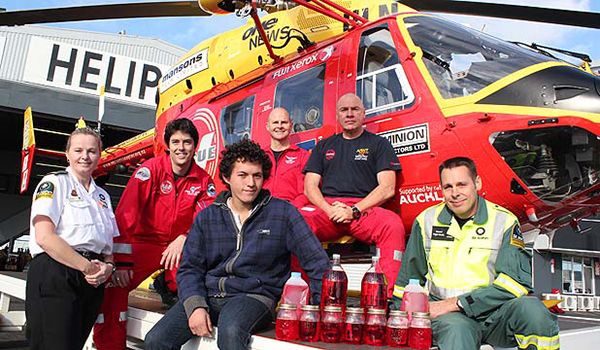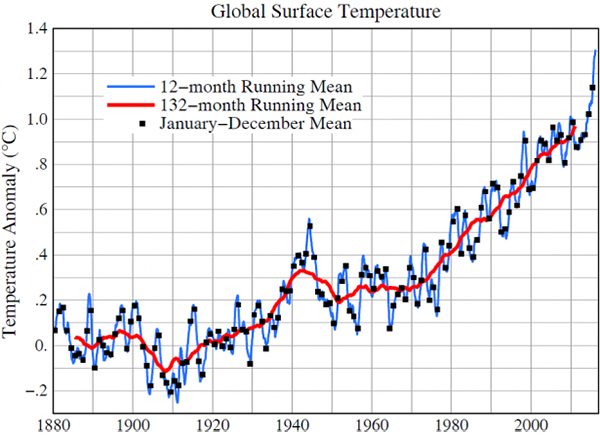Health boards and the triennial panning of STV

Name Recognition Everything: Despite being young, red-blooded, and photogenic, James Le Fevre, second from left, only just pipped Warren Flaunty for fifth place, out of seven, onto the Waitematā District Health Board. Flaunty, meantime, with his prodigious appetite for local representation—he, during one three-year term, simultaneously sat on three local boards, a health board, and a liquor licencing trust—drew the attention of Parliament, and helped precipitate a law change requiring fidelity to one local board at a time. None of this has helped preference voting’s public perception. image Rodney Times
Every local-body election since its introduction, sees the same disinformation.
The rock-solid single-transferable-vote system, first computerised in Aotearoa and used by her for 12 years, is set to endure its triennial onslaught of slings and arrows.
Single-transferable-vote is a preference electoral system that unerringly divines which candidate or candidates are most preferred, unlike crude first-past-the-post, which is a divide-and-rule politician’s wet dream.
At every election held since 2001, when the government made its use compulsory for district health board elections and optional for local-body elections, disinformation aimed at its abolition abounds. Most of it is courtesy of the self-serving efforts of politicians who know full well they are not the most preferred candidates, or their henchmen, but some is far subtler, such as this from the Department of Internal Affairs:
This condescension, be it casual or calculated, has no more place in a robust democracy than does first-past-the-post, with its often perversely undemocratic outcomes. To a nation of inveterate turf-racing enthusiasts, the assertion that races shouldn’t begin to be called until the place-getters are well past the winning post, lest some mount come from behind and confuse the punters, is preposterous. All that is required when progress results are announced, in these first decades of computer-processed preference voting, is that citizens be reminded that:
Where a contest is close, positions can change markedly, even towards the end of counting, and come-from-behind wins are possible.

Zero Help with District Health Boards: Generation Zero’s Auckland election scorecards, had they also assisted in the unnecessarily arduous ranking district health board candidates, would have arguably made a far greater contribution to lifting Aucklanders’ turnout, from its shameful 35% 2013 level, than their rating of council candidates. Tessa Berger, the only candidate for local board or the governing body to achieve straight-A+ ranking, should nevertheless take her win, not least of all because her breath-of-fresh-air mainstream-media appearance galvanised coverage of the election. infographic Generation Zero
Shortly after polling closes next Saturdayas opposed to this Saturday; 8 October, it is likely that the returning officer will know exactly which three candidates have the best chance of representing the Warkworth subdivision of the Rodney Local Board. But even first-past-the-post can leave candidates in limbo for much longer than preference voting typically does, such as the remarkably common occurrence of tied and too-close-to-call voting. An example of the latter occurred in 2007 in the last ever Rodney District Council election, when running mates Colin MacGillivray and Wayne Walker traded places over the course of 26 excruciating days before Walker was finally elected, following a judicial recount, after being provisionally ahead on the night. Under preference voting, in contrast, ties are all but impossible, which, aside from any other consideration, has the potential for reducing the likelihood of candidates resorting to costly recounts.
Currently, however, the worst possible advertisement for preference voting is its implementation for district health board elections. Even with this year’s mercifully small field of 16 candidates—down from a stultifying 35 in 2013—vying for 7 board positions, without the equivalent ofsee Update, below Generation Zero’s Auckland election scorecards, would try the patience of the most dutiful citizen. A moment’s inattention can see a ballot spoiled. Electronic voting has the potential to make such elections far more forgiving, by simply allowing names and faces to be dragged and dropped until the voter is happy with the result. This would likely totally rectify the almost criminal, 30-times-higherin 2013 incidence of informal district-health-board ballots, to mayoral ballots, cast. While not having quite the highest percentage of informal ballots, at 2.6 percentage points worse than the national average, Waitematā District Health Board had to look all the way to the Southland constituency of the health board there, to point the finger at a poorer, by just 0.6 points, result.
Predictably, top of the Waitematā board’s suggested solutions was that all local elections be first-past-the-post. However, the board is correct when it points out that the worst results are where, as in the Auckland region, preference and first-past-the-post voting takes place on the same ballot. But rather than dispatch preference voting in favour of divide-and-rule first-past-the-post, in the Auckland region, the at-large health board electorates should be replaced by wards corresponding to the Auckland Council wards. That, for example, would mean just one board seat to fill in the current Rodney ward area, and vastly increase the chances of voters knowing at least a little about their candidates. Admittedly, this would result in four fewer board members regionally—24 down to 20. But when the high rate of informal votes is added to the similar rate of blank ballots, combined with the forlorn 35% voter turnout, can see the Waitematā District Health Board’s chairman, Max Abbott, for example, receive less than 4% of registered voters’ first preferences, and still be the highest polling candidate, this is the very least of health board representation issues.
Then there is the high number of board members double-dipping as local body representatives. This, arguably, is no more legitimate than it was for Greg Sayers to simultaneously represent both the Hibiscus and Rodney local boards—it took an amendment to the legislation this year to proscribe that aberrant practice. Given the monstrously more complex undertaking achieved in amalgamating the region’s seven local councils, creating one regional health board from the current three district boards is surely only a matter of time. Such a board, standing shoulder-to-shoulder with Auckland Council, would have the weight to take on Wellington, and, indubitably, be far better placed to tackle the root causes of the non-communicable-diseases epidemic that will otherwise overwhelm the region’s health systems, almost irrespective of funding levels.

Noncommunicable Diseases Silver Bullet: The singular intervention that would contribute most to the job of the district health boards is to immediately prioritise roads for people, in buses, rather than for cars. Not only can a bus like this empty kilometres of cars from a motorway lane, provision of public transport has been found to be the only health intervention that makes a blind bit of difference, according to New Zealand-born world authority on noncommunicable diseases, Professor Neil Pearce. image Jacob Brown NewstalkZB
Proponents of preference voting invariably favour at-large electorates, and the larger the better. But this stems from the use of preference voting to produce a crude form of proportional representation. However, proportional representation is only necessary in arenas where party politics is dominant, whereas, in local-body elections, citizens invariably value local representation more. If Rodney residents were polled on the issue, it can readily be guaranteed that a massive majority would vote for a ward-sized district health board electorate, electing its own representative, over being lumped into the more-than-nine-times-larger Waitematā electorate, as they are now.
Sadly, come Saturday 8 October, only about one in three Aucklanders will have returned their ballot papers, and a significant factor in that undemocratic state of affairs is the struggle to engage in the unwieldy, at-large district health board elections. The reforms that are required are uncomplicated, but central government has abdicated its responsibility for the local electoral landscape, due to its ideological preference for leaving decisions, for example, for councils to adopt preference voting, to individual councils. Councillors, even supposing they have any sort of grasp of electoral systems—even the Royal Commission on Auckland Governance couldn’t get its head around it—are notoriously averse to voting for early Christmases, by changing the system that elected them.
The only means of change left is to ensure that all college students are pre-enrolled and commence voting pre-age-of-enfranchisement. The first phase is to involve all year-7-and-onwards students in Kids Voting, something that Tessa Berger has already proven her potential to spearhead. Such an evidence-based programme, backed by the mainstream media, could have a measurable impact on the percentage of 18–24-year-olds voting in 2019 and 2020, and local and central government could begin implementing meaningful climate action immediately thereafter.

A ‘Better’ Graph: The combined average temperature over global land and ocean surfaces, rising near vertically here on what Dr James Hansen describes clinically as ‘a better graph’, illustrates all too graphically the implications of the last 28 years of inaction on climate. Meantime the world is bogged down in 20th-century-style conflicts, when it should long since have learned to play nicely, and be mobilising, as sisters and brothers in arms, for radical climate action. graph James Hansen and Makiko Sato
Syria, meanwhile, starkly demonstrates just how ill prepared the world is to respond to a rapidly warming climate, and even Green parties are unprepared to take radical climate action. Although time isn’t on civilisation’s side, 28 years of climate procrastination at the hands of, initially, the Greatest Generation and, since, the baby boomers, has left precious little climate wriggle room. Just as in the world wars, it will be the young who go into climate action, and, if Generation Zero is any indication, they will not wait around for older people to tell them what to do—they have already begun to tell their elders what to do, for example by giving Tessa Berger, and only Tessa Berger, straight A-pluses.
Meantime, it’s not too late for those desperately needed young people to get onto the roll:
…and cast a special vote:
…for:
BERGER, Tessa for local board member
Update Since publication, the Spinoff has done science and Aucklanders a sterling service by calling out the non-evidence-based candidates.
